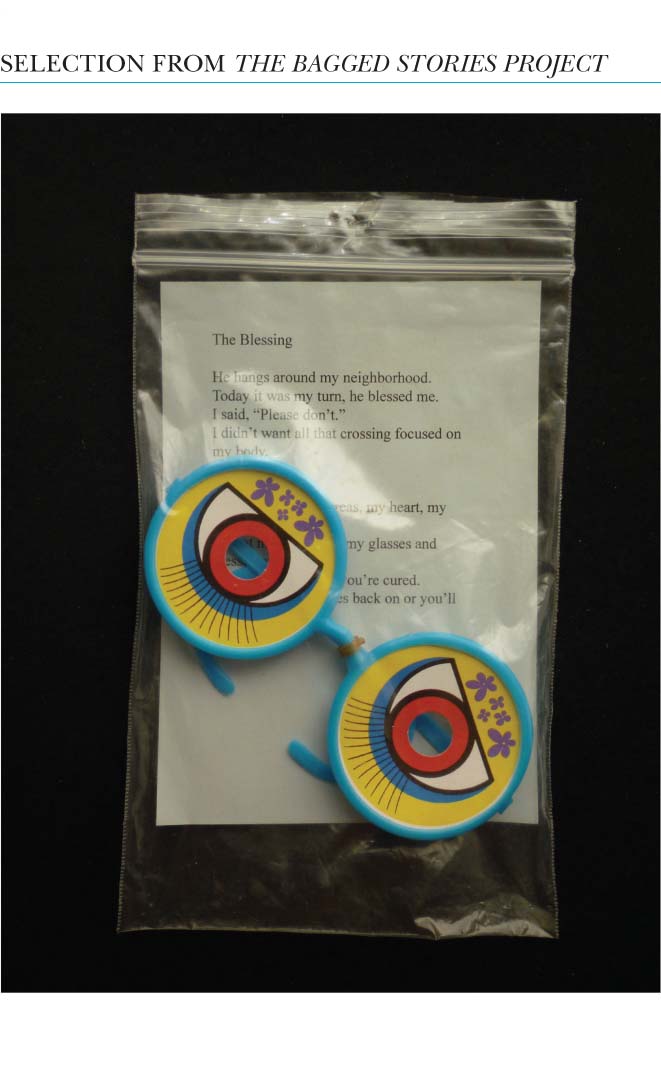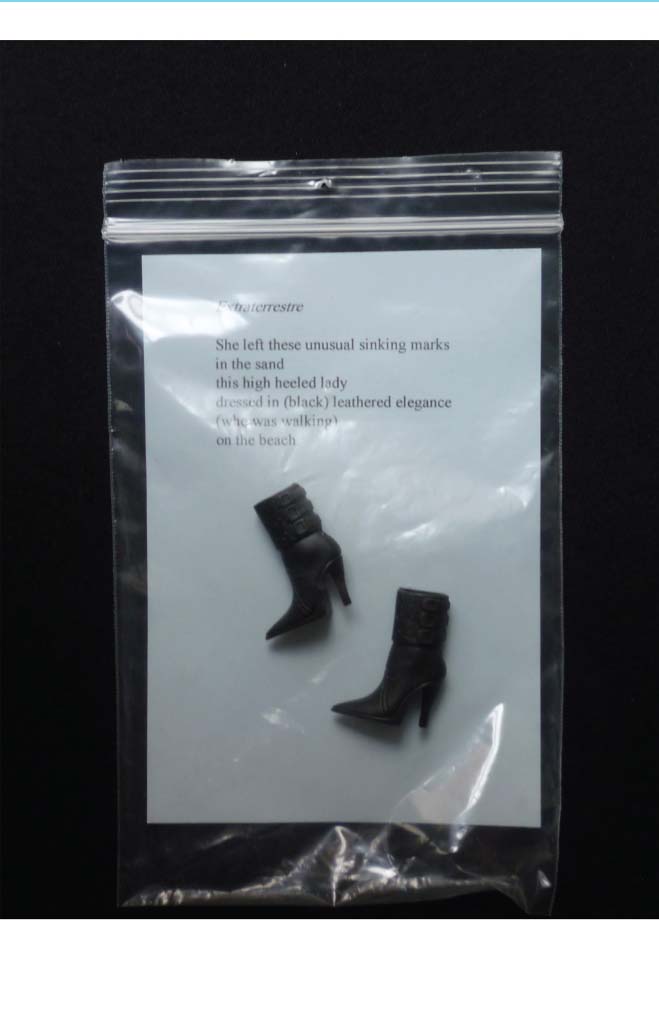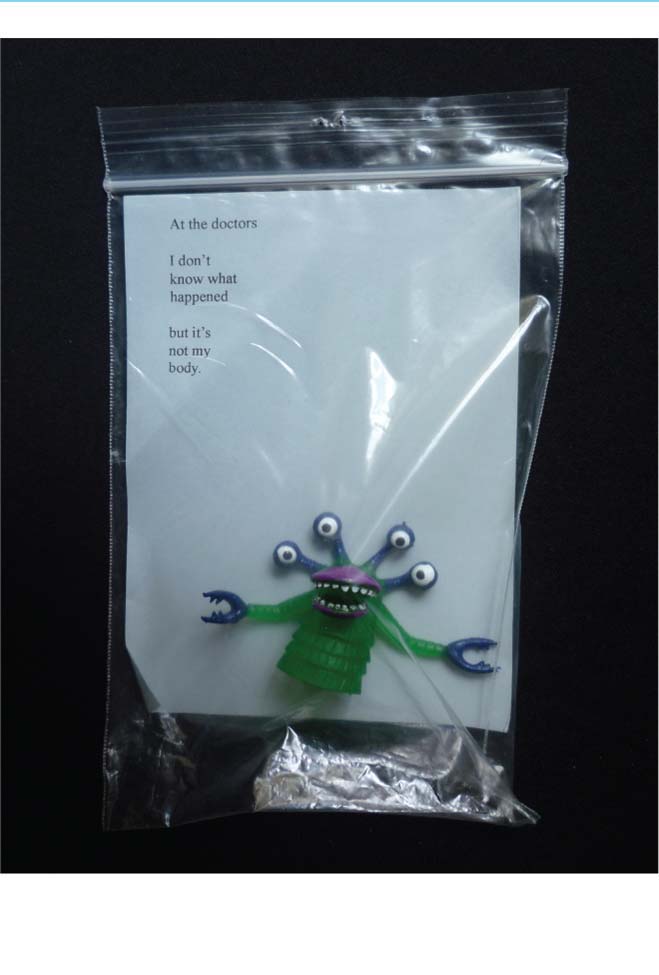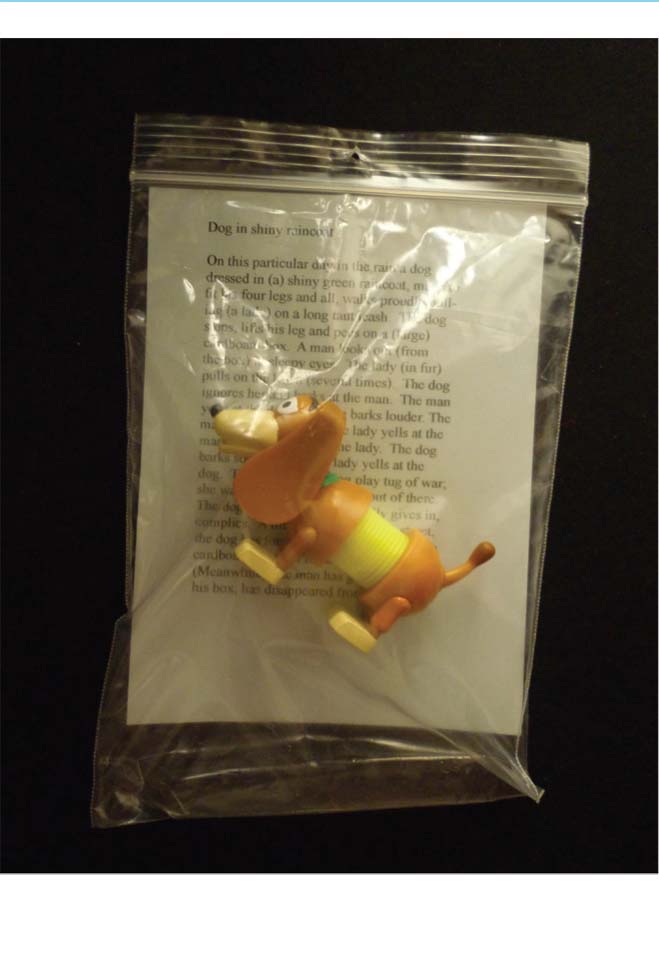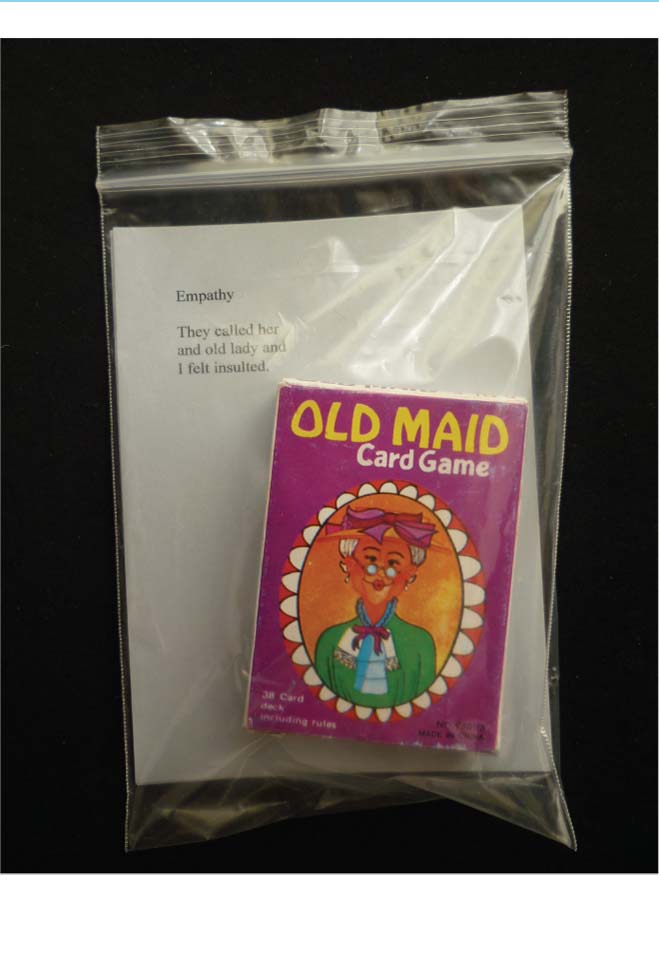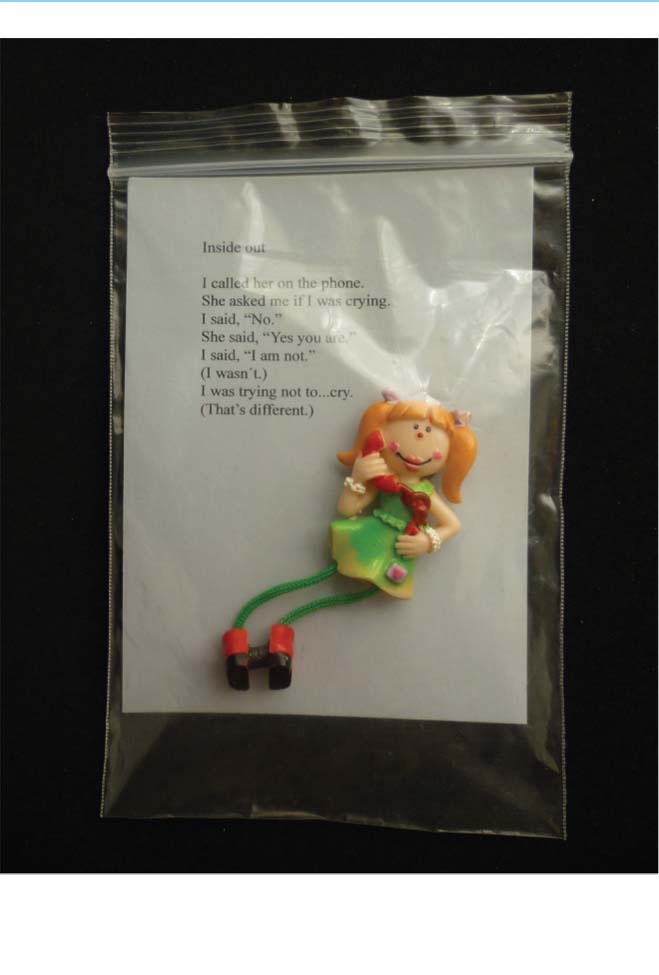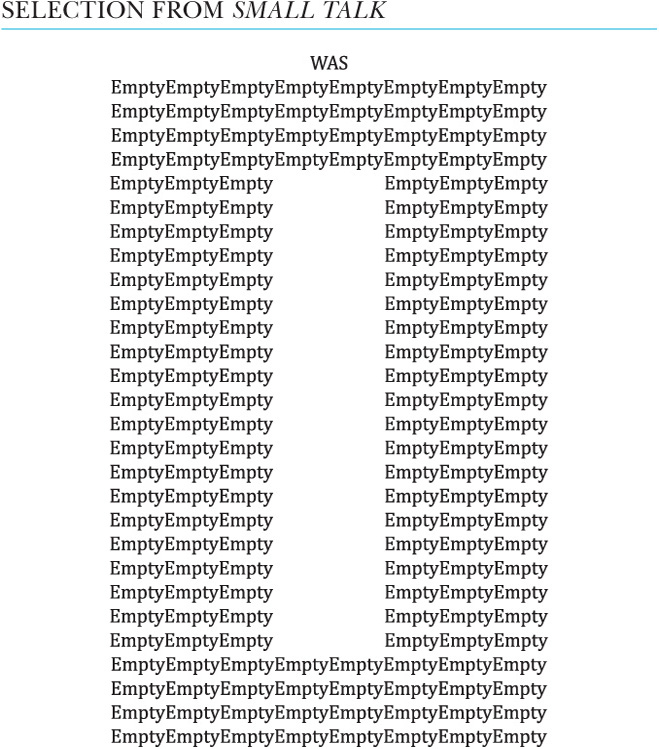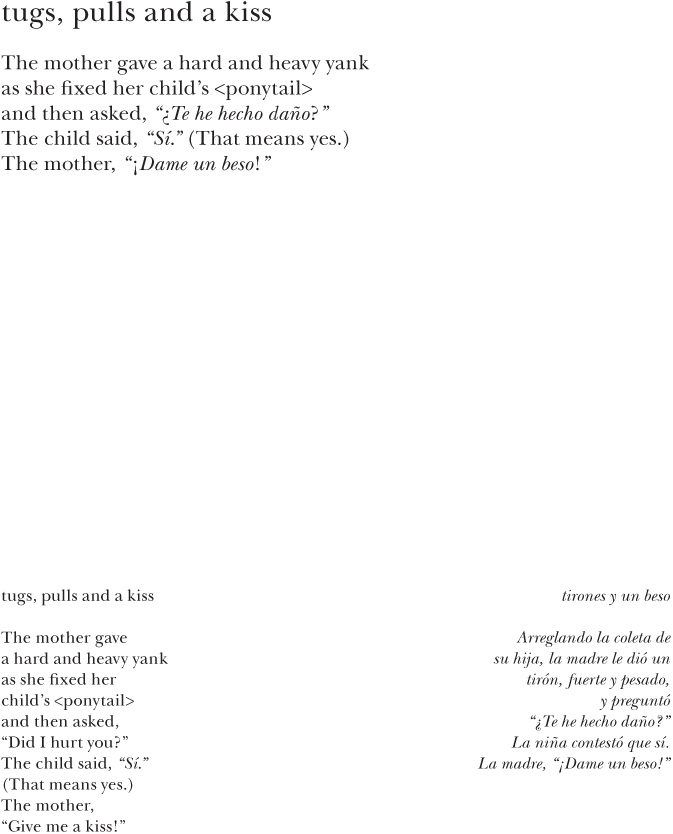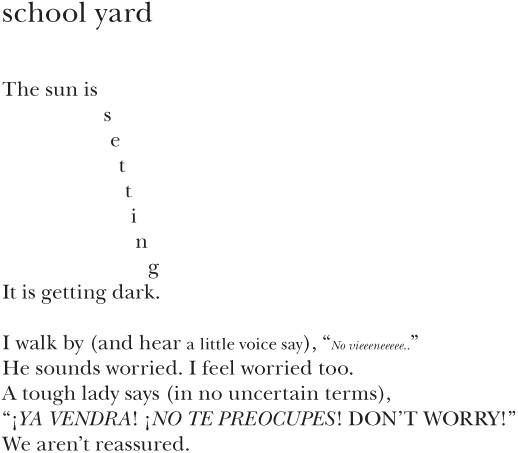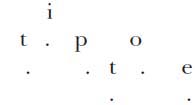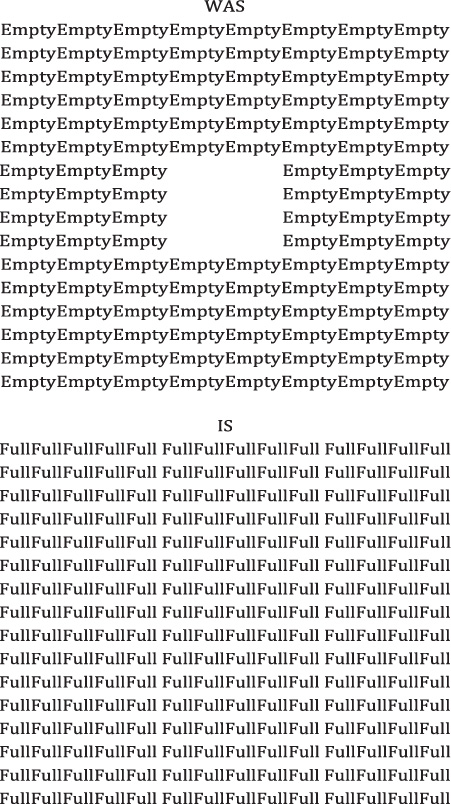| Small Talk I have just finished a new book, Small Talk, a collection of short literary or poem-like pieces largely based on real experience observed and/or participated in and some questions and reflections. My writing is meant for dialogue, dialogue with self and dialogue with other. I invite my readers to dialogue with me, and each other, through my Facebook page, by email and/or in person. “Small Talk plays like jazz with improvisations, melody and different tempos. Marjorie Kanter fills the texts with irony, humor and sensitivity. To read her pieces is an expanded experience that changes every time you read them. Small Talk is a compilation of her work imagined, experienced, written and rewritten over the past ten years.” Delgado Guitart Words matter. Actions matter. The same word, the same action can sometimes mean something quite similar to author and reader, yet at other times something very different from writer to reader and reader to reader, and yet still carry meaningful meaning. At the outset, I write for myself, to help let go of, enjoy, work through, understand, save a thought, an experience, a gesture, an encounter… When I decide to share my writing formally, it is because I feel I have reached a corpus that will be meaningful to others, that it can stand alone without me. Most of my writing is a reflection of real experience, either a short interact between several people or a reflection on life in feelings or thoughts. Coming out of Bilingual Speech and Language Therapy, having failed French and Latin in high school, but always having had a real interest in languages and cultures and a desire to connect cross-culturally, Spain gave me my first real positive experience in the learning of a second language, and at the same time, opened the doors to my creativity; this living in a new culture that was/is sometimes so interesting, so marveling, and at other times, left/leaves me so terribly confused…even in a heavy state of frustration. My writing began with scribblings in notebooks, or in fact anywhere, including on toilet paper, and in anyplace including in the middle of the street. It served (and still does) as a way to communicate with someone and that someone was/is myself. I wrote/write for myself. To communicate with myself. To get inside my experiences. To set things aside. To take distance. And mostly, just because I had/have to do it. I could/can not, not, do it. For years, I kept those journals, having no thought/inkling that I would do more than that, just scribble down these thoughts and feelings and put them aside…except that I didn’t throw them away. But eight years after I’d begun the journals, I moved from small town Tarifa, Spain to Madrid (1994) and I began re-reading my words. Pieces of text popped-out, calling for something to be done with them. That’s when I began manipulating, playing with, doing something with my experiences and texts…though still thinking I was doing it just for myself…and time to time, to share informally with my family and friends. Part of my development came when I joined several successive writer’s groups that started and stopped as people came and went from Madrid…some I joined, some I began. I thrive on the dialogue that sharing my working pieces provokes and engages both myself, and my readers, in. We talk about writing, but also about life. Why people do what they do? How we interpret things? How we judge each other? How to consider that there might be more than one possibility as to why someone has done what they have done, and not necessarily one right way to do things, what experiences we share in common and those that seem so unique. Still, I was working for myself. Not imagining that I would publish and give workshops and do all kinds of things with the word in public. In 2000, I read about the Barcelona Review and sent them my piece, “The Skirt.” To my surprise, they took it. That was like a stamp of acceptance, that I was a writer officially, that I was doing more than just doing something for myself. Slowly, I built a corpus of what seemed to be finished texts and then began to put together my first collection: I displace the air as I walk, 2004. From there, things moved more quickly. I began giving workshops in writing and creativity, interactive process oriented sessions focused on facilitating the opening of doors for the participants in finding their own creativity. And, to use all of that for dialogue to build self and interactive understanding. Another milestone was my inclusion in Supraficciones, an exhibit with La Caixa in Lleida, Spain. I use paper sharing in the form of off-prints and books; public space sharing in the form of installations such as a collection of bagged stories where I exhibit zip locked baggies that contain a text of mine printed on a card (postcard size) along with a found object that I have searched for to go with the text, all to be hung on a wall or placed individually in a box or handed out as a business card. I have installed vinyl texts in a museum using the bathroom mirrors, the elevator, the stairs, underneath an auditorium seat, an empty bench at the entrance, etc. for the location of these words/stories. Digitally, I have used Facebook, a web (www.elasunto.com/mkd.htm), and Twitter. Workshops or special events might include performances by participants where they are given a prompt such as my piece Hola/Adios. The participants are divided into pairs who each prepare and present a representation of the silence that fills most of this text. In another project, I interact with a public waiting in long lines to enter somewhere. Here I read some of my texts (about waiting) to them to provoke dialogue and turn the waiting time into a time of exchange, into an artistic and communicative experience in and of itself. They tell their stories about waiting too. I also take people on a walking tour of my area of Madrid (el Barrio de las Letras - the literary neighborhood) where I read some of my texts in situ… where they first occurred. In the mix of what I do, I have a major focus or interest in the field of the pragmatics of communication, human development and human interaction – what is it we think, intend, do, intend, and what is the outcome of all of this. Most of the time, I attempt to capture life as it is, leaving quite a bit out of the text, leaving a lot up to the reader. I am interested in what is in my mind, what ends up on the page and what the reader adds to the page. I care about what we think our intentions are, how we play them out and what their function is. Above all, perhaps, many of my texts serve a point of jumping off into reflection and dialogue. What I put into a text and what I leave out is primordial. I may work on five lines or even one sentence for 20 years, to get it just right, to find its essence, yet another piece may just pop out finished, just like that. This process includes repeated expansions, making grow, writing about the same memory or story or piece without looking back at the other versions and later reductions, going through cycles of setting aside and revisiting, plus share-ings of the texts with others in dialogue and later finding all the versions and putting them together to work toward a final text. Sometimes I put printed-out pages under my pillow to keep my mind working quietly while I sleep.
(Below I share some images from The Bagged Stories Project and texts from Small Talk.)
Little toddler, 1. Digging in mommy’s favorite plant.The little architect and the big dig: 2 I was staying at their house. It was the three of them: It was (when) I was turning the corner from It was (to be)
She speaks to him It’s a lot of words
a-l-o-n-g the sidewalk. He gets a pedicure
It’s not
He was
He’s a tall thin man.
A family is out for breakfast.
1. Dos orfidales Some hours later, The objects: 1. Two sleeping pills
Favorite Hat I was at a ladies’ gathering.2. Sighting I was early for a ladies’ gathering.
But no one knew anything about my hat. 
I went for
Just before he We were sitting in
One day He was more
On the subway. the train floor.
The auditorium filled up early.
He uttered a few words.
It was pouring rain when I overheard him announce to his
wet. I overheard him tell his colleague, “I had an
What
Author of short literary and poem-like pieces, Marjorie Kanter holds degrees from Ohio University and the University of Cincinnati. She first visited Spain in 1965 and has lived between Madrid and Tarifa for the past 27 years. Author of “I displace the air as I walk”, “Small Talk”, “The Saddle Stitch Notebooks”, “The Bagged Stories” and “Im/politeness: One Hundred Im/polite Days” amongst other texts, she has participated in Public Word Art Installations and Interactive Projects at La Caixa, Lleida (In-Comunicación); La Noche en Blanco, Madrid (Historias para la Espera) and for Madrid Abierto. She is a researcher of Paul Bowles and his mixing of codes in particular. She gives workshops and seminars in creativity and writing. She has presented her writing and offered training in events with The University of Alicante, the Contemporary Writer’s Forum of the University of Siegen, The University of New Orleans Masters Program in Creative Writing, La Caixa, Lleida, The University of Minnesota, and others. Her conference presentations include mixing creativity and research in various areas of linguistics at conferences such as Creating Characters, Inventing Lives: The Art of the Self at the 2nd International Symposium, Barcelona, Spain, Performing Tangier (Morocco), The International Short Story Conference (Alcala de Henares and Vienna), College English Association (St. Petersburg, Florida), Contrastive Linguistics (Santiago de Compostela), Discourse Analysis (Valencia), MESEA (Pamplona), Pragmatics of Human Communication (Madrid), Popular Culture (Boston), etc. Her workshops focus on the process of opening doors to creativity and writing and an exploring of social, psychological and cultural issues for living and for writing. She considers herself a creative ethnographer, mixing her training and professional experience as a speech therapist (1965–1985) and her interests and studies in the areas of communication, linguistics, language development, psychology, sociology and interculturality with her found creativity. In her writing, she strives to mesh (all) her different selves, experiences and interests. “Writing found me. A need to communicate with self, take distance, get inside my feelings and experiences, all provoked me to keep journals that slowly turned into finished poem-like pieces often in narrative form.” Originally from Cincinnati, Ohio, Marjorie Kanter has lived in Spain for the past thirty years with sojourns to Morocco and a year in the Dominican Republic. Marjorie Kanter |
